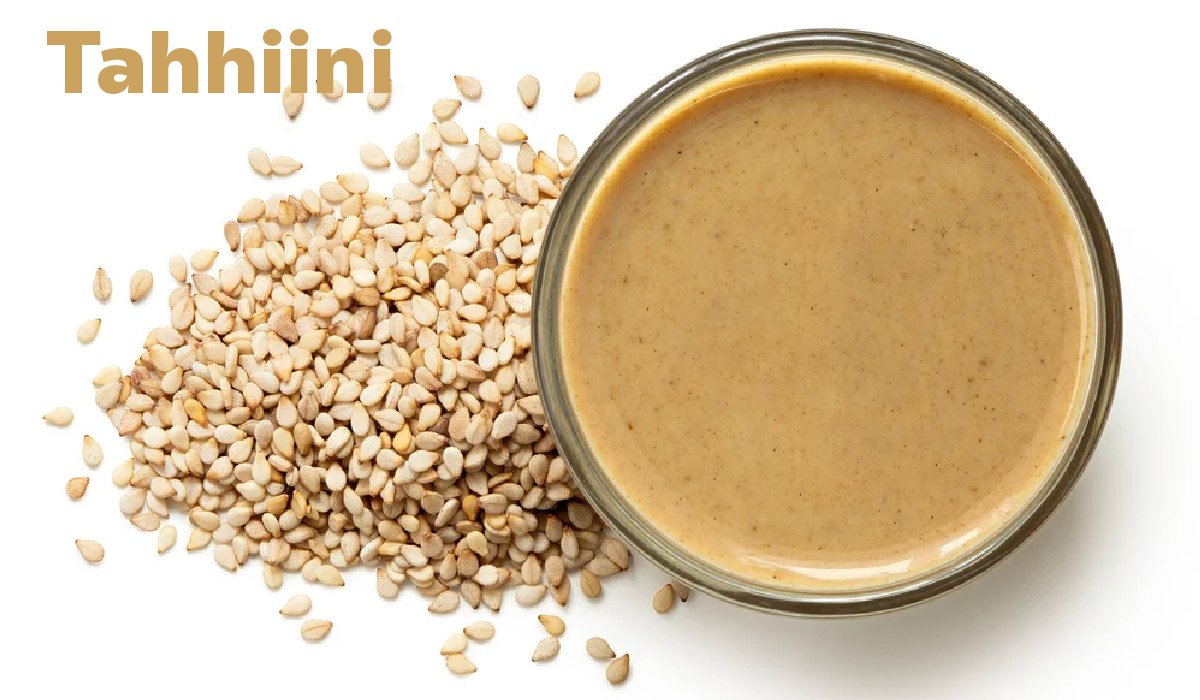Blog
Tahhiini Benefits Uncovered: The Powerful Super Paste You Need Today

Tahhiini is a creamy, nutty paste made from ground sesame seeds, and it has rapidly gained global popularity for its rich flavor, smooth texture, and incredible versatility in the kitchen. Though often mistaken for a trend, tahhiini has been a staple ingredient in Middle Eastern and Mediterranean cuisines for thousands of years. Today, it has found a permanent place in modern kitchens across the globe, loved by chefs, home cooks, vegans, and health enthusiasts alike.
Whether drizzled over roasted vegetables, blended into hummus, or used in baked goods, tahhiini brings an earthy, toasted depth that’s difficult to replicate. Beyond flavor, tahhiini is also loaded with essential nutrients like healthy fats, calcium, protein, and antioxidants, making it not just a culinary delight but a smart choice for balanced eating. If you’re looking for an ingredient that connects tradition, health, and creativity, tahhiini is one of the most powerful tools you can have in your pantry.
Understanding the Basics: What Exactly Is Tahhiini?
At its core, tahhiini is a paste made by grinding sesame seeds until they release their natural oils and transform into a smooth, pourable consistency. Unlike peanut butter or almond butter, which are also seed or nut-based, tahhi ini has a more savory and slightly bitter flavor, making it ideal for both sweet and savory dishes. Some versions include a bit of sesame oil to enhance the texture, but high-quality tahhi ini requires nothing more than good sesame seeds and proper technique.
It’s naturally vegan, gluten-free, nut-free, and dairy-free, which makes it a favorite among people with food sensitivities or specific dietary needs. You might see variations in spelling—tahhiini, tahini, tahina—but they all refer to the same creamy sesame paste, adapted through different languages and cultures.
The Deep History and Cultural Importance of Tahhiini
Tahhiini is not just an ingredient—it’s a piece of history. Its origins trace back over 3,000 years to ancient Mesopotamia, Persia, and India, where sesame seeds were among the first oil-rich seeds to be cultivated by humans. These civilizations prized sesame for both its nutritional and symbolic value, associating it with longevity, health, and abundance. In Ancient Egypt, tahhiini-like pastes were used in rituals and royal diets.
Later, it became central to Jewish, Arab, and Mediterranean cooking, appearing in iconic dishes like hummus, baba ghanoush, and halva. The spread of tahhi ini through the Silk Road and Ottoman Empire embedded it deeply into countless regional cuisines. Today, tahhi ini represents a culinary bridge between cultures—whether spooned over falafel in Lebanon, mixed into sauces in Greece, or whipped into trendy desserts in California, its influence is global and growing.
Health Benefits of Tahhiini: A Nutritional Powerhouse
Tahhiini is more than just tasty—it’s packed with nutrition that supports overall wellness. Rich in monounsaturated and polyunsaturated fats, tahhi ini helps lower bad cholesterol and support cardiovascular health. It’s also an excellent plant-based source of protein, offering essential amino acids that help build muscle, regulate hormones, and support cell repair. One of tahhiini’s standout features is its high calcium content, which rivals that of dairy products, making it an ideal choice for people who are lactose-intolerant or vegan.
It also contains magnesium, iron, zinc, and phosphorus—critical minerals that contribute to bone strength, immune health, and energy production. The antioxidants in sesame seeds, especially lignans like sesamin and sesamolin, help reduce inflammation and combat oxidative stress. Plus, its natural fiber content supports digestion and helps you feel fuller for longer. If you’re looking for a single ingredient that combines flavor with health, tahhi ini delivers on both fronts.
Hulled vs. Unhulled Tahhiini: Which One Should You Choose?
When buying or making tahhiini, you’ll often encounter two types: hulled and unhulled. Hulled tahhi ini is made from sesame seeds with the outer shell removed, resulting in a smoother, creamier paste with a lighter color and more delicate flavor. It’s the most commonly used variety in dips and sauces due to its neutral taste and easy mixing qualities. Unhulled tahhi ini, on the other hand, retains the sesame seed’s outer shell, which gives it a slightly grainier texture, darker color, and more robust, slightly bitter flavor.
Nutritionally, unhulled tahhi ini contains more calcium and fiber, but it may not be suitable for all recipes, especially sweet dishes. For most general cooking and baking purposes, hulled tahhi ini is the better choice unless you’re specifically looking for added fiber or a stronger sesame punch.
How Tahhiini is Made: From Ancient Craft to Modern Convenience
Traditional tahhiini is made by lightly toasting sesame seeds to bring out their nutty flavor before grinding them into a thick paste using stone mills. This method, passed down through generations, preserves the integrity of the seed’s oils and nutrients while delivering a deeply aromatic and flavorful product. In modern factories, high-speed metal grinders replace stone mills, allowing mass production for commercial tahhi ini.
Some versions may include preservatives or additional oils to extend shelf life or adjust texture, though purists prefer 100% sesame paste without additives. At home, the process is simple yet rewarding: toast sesame seeds in a dry pan until golden, let them cool, and then blend them with a neutral oil until smooth. Homemade tahhiini allows you to control the quality, texture, and freshness, ensuring a superior product with no unwanted ingredients.
Step-by-Step Guide: Making Tahhiini in Your Own Kitchen
To make tahhiini at home, you only need a few ingredients and a little patience. Start with 2 cups of hulled sesame seeds and optionally, 2–4 tablespoons of a neutral oil like grapeseed, sunflower, or sesame oil. Lightly toast the sesame seeds in a dry skillet over medium heat, stirring constantly until they turn a light golden brown—be careful not to burn them, as over-roasting creates bitterness.
Spread the seeds out to cool, then transfer them to a food processor and pulse until crumbly. Gradually add oil and continue blending until the paste becomes smooth, creamy, and pourable. Scrape down the sides of the processor as needed to ensure even mixing. If the tahhi ini tastes bitter, you may have roasted the seeds too long or used stale seeds. Store the finished product in a clean glass jar in the refrigerator, where it will stay fresh for several weeks.
Exploring Global Varieties of Tahhiini
Though the basic concept of tahhiini remains the same across cultures, the way it’s used and even slightly altered varies. In the Middle East, tahhi ini is a pantry staple found in nearly every home, primarily used in dips like hummus and baba ghanoush or as a topping for meats and vegetables. In Israel, tahhi ini is drizzled on everything from sandwiches to breakfast bowls. Greek cuisine often blends tahh iini with honey for a sweet spread eaten on bread.
In Turkey, tahin pekmez—tahhiini mixed with grape molasses—is a popular breakfast treat. Western markets have embraced tahhi ini in gourmet and vegan forms, often flavoring it with chocolate, vanilla, chili, or herbs for unique culinary applications. These regional differences showcase the ingredient’s incredible adaptability while celebrating its cultural roots.
How to Use Tahhiini in Cooking: From Savory to Sweet
Tahhiini is a truly versatile ingredient that can elevate both savory and sweet dishes. On the savory side, it’s a key player in Mediterranean dips like hummus and baba ghanoush, as well as dressings, sauces, and marinades. A classic tahhiini sauce—made with lemon juice, garlic, water, and salt—makes an excellent drizzle for roasted vegetables, grain bowls, or grilled meats. It also works beautifully as a creamy base in soups or pasta sauces.
For sweet applications, tahhi ini pairs wonderfully with honey, maple syrup, or chocolate, making it a perfect ingredient in cookies, brownies, granola, and halva (a dense, fudge-like Middle Eastern dessert). You can swirl it into yogurt or oatmeal, or spread it on toast with banana slices for a wholesome breakfast. The possibilities are endless when you get creative with tahhi ini in your cooking and baking.
Alternative Uses for Tahhiini Outside the Kitchen
While tahhiini shines in food, it also has practical uses beyond the plate. Thanks to its rich oil content and vitamin E, tahhi ini can act as a natural moisturizer when used as a skin treatment or face mask base. Its antioxidants help soothe and protect the skin, especially when combined with other natural ingredients like honey or yogurt. It can also nourish dry hair when used as a deep conditioning treatment. Additionally, tahhi ini is perfect for homemade energy bars—just mix it with oats, dates, and nuts to create a nutritious snack. Historically, sesame oil and paste have been used in beauty rituals across cultures, showcasing the multipurpose value of this incredible ingredient.
Storage Tips: Keeping Your Tahhiini Fresh and Delicious
Proper storage is key to maintaining the quality and freshness of tahhiini. An unopened jar can last up to 12 months when stored in a cool, dark place. Once opened, it’s best to refrigerate tahhiini to extend its shelf life and prevent spoilage. Natural oil separation is completely normal—just give it a good stir before use. Use a clean spoon each time to avoid introducing moisture or bacteria. Storing tahhi ini in a glass jar is recommended over plastic to preserve its flavor and prevent oil leaching. If the tahhi ini begins to smell rancid or loses its smooth texture, it’s time to replace it.
Common Mistakes to Avoid When Using Tahhiini
Even though tahhiini is simple, people often make small mistakes that can impact flavor or texture. One common error is not stirring the tahhiini properly before use, which can lead to uneven consistency. Another is over-toasting the sesame seeds when making it at home, which creates bitterness. Adding too much oil during blending can result in a runny texture that doesn’t work well in recipes. Using stale or old sesame seeds can make the final product taste off. Finally, tahhi ini has a naturally bitter edge, so it should always be paired with acidic (like lemon juice) or sweet (like honey) ingredients to balance the flavor in both savory and sweet dishes.
Final Thoughts
Tahhiini is more than just a food trend—it’s a timeless ingredient rooted in culture, history, and health. With its creamy texture, nutty flavor, and wide range of uses, it adds depth to everything from dips and sauces to desserts and snacks. Packed with nutrients like protein, healthy fats, calcium, and antioxidants, tahhiini supports a balanced, plant-forward diet while delighting your taste buds. Whether you choose to buy it from your local store or make it at home, tahhiini offers a unique combination of flavor, nutrition, and tradition that few ingredients can match. Add it to your pantry and start experimenting—you’ll be amazed at how much one simple paste can transform your cooking.
FAQs About tahhiini
1. What is tahhiini made from?
Tahhiini is made from ground sesame seeds. The seeds are usually toasted and then blended into a smooth, creamy paste. Some versions may also include a little oil to help with texture, but the main ingredient is always sesame seeds.
2. Is tahhiini good for your health?
Yes, tahhiini is very healthy. It contains healthy fats, plant-based protein, calcium, magnesium, and antioxidants. These nutrients support heart health, bone strength, and overall wellness. It’s also gluten-free, dairy-free, and vegan-friendly.
3. How do you use tahhiini in cooking?
You can use tahhiini in both sweet and savory recipes. It’s perfect for making hummus, salad dressings, sauces, and dips. It also works well in baking—like tahhiini cookies or brownies—and can be added to smoothies, oatmeal, or even spread on toast.
4. Does tahhiini need to be refrigerated?
Yes, after opening, tahhiini should be refrigerated. This helps it stay fresh longer and prevents the natural oils from going bad. Stir it well before using, as the oil may separate over time.
5. What is the difference between tahhiini and tahini?
There is no difference—tahhiini and tahini are the same thing. The word is just spelled differently in various regions. Both refer to the same sesame seed paste used in many Middle Eastern and Mediterranean dishes.
For More Information, Visit Coopermagazine
-

 Celebrity1 year ago
Celebrity1 year agoWho Is Jennifer Rauchet?: All You Need To Know About Pete Hegseth’s Wife
-

 Celebrity1 year ago
Celebrity1 year agoWho Is Mindy Jennings?: All You Need To Know About Ken Jennings Wife
-

 Celebrity1 year ago
Celebrity1 year agoWho Is Enrica Cenzatti?: The Untold Story of Andrea Bocelli’s Ex-Wife
-

 Celebrity1 year ago
Celebrity1 year agoWho Is Klarissa Munz: The Untold Story of Freddie Highmore’s Wife
















